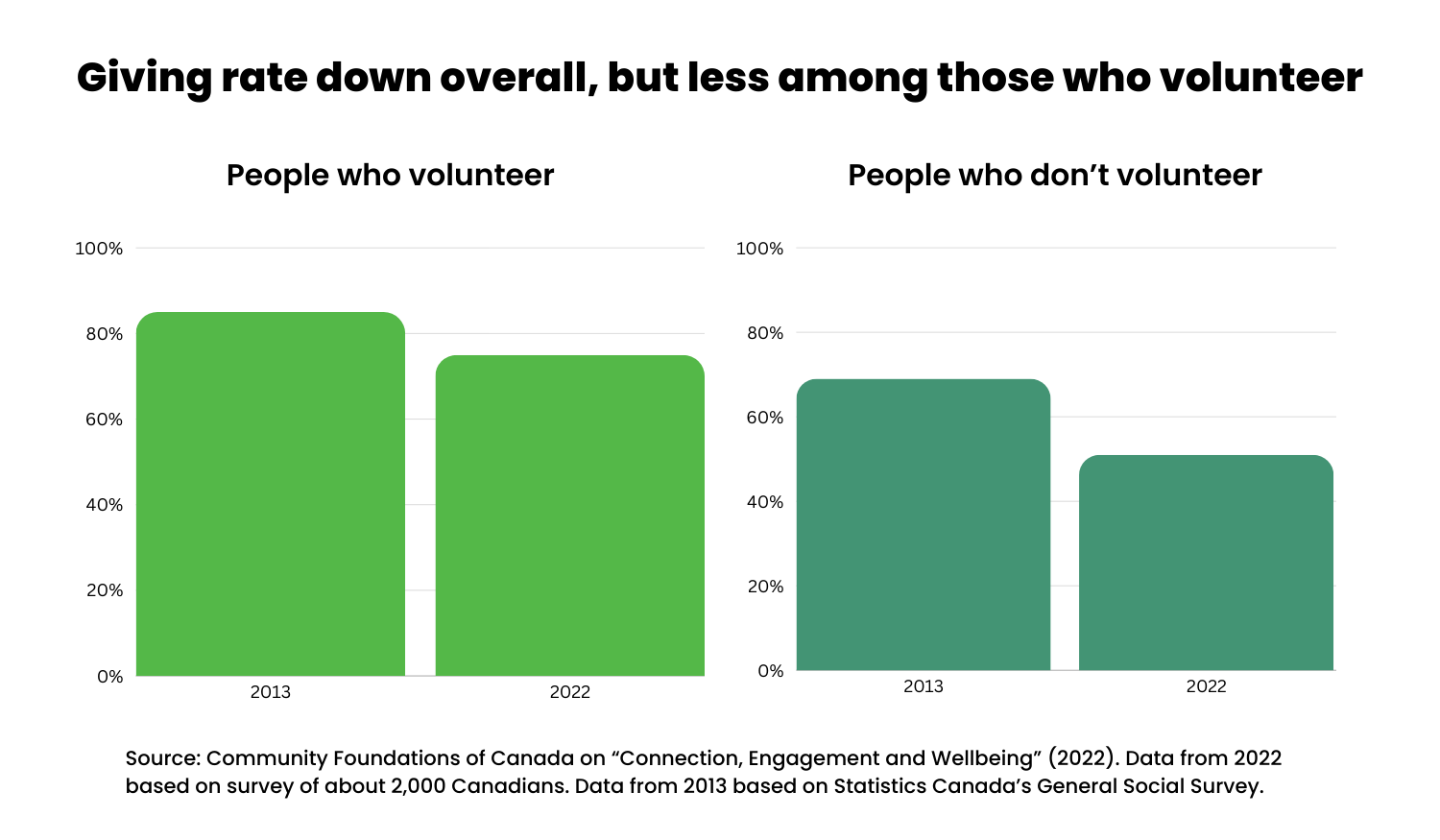New volunteering grant program may offer surprising boost for donations: Experts
Why It Matters
More than 65 per cent of non-profits experienced a volunteer shortage in 2022. Some experts say helping to re-engage a new cohort of helpers may also drive giving.

Editor’s note: This is part two of a mini-series exploring the link between social connectedness and giving. Read the first story here.
Across Toronto, 35 resident-led groups got some welcome news earlier this month, learning they’d each been selected to receive a $1,000 microgrant to power their work.
The grants are part of a new Toronto Foundation program called the Power of Us, designed to spur volunteering, resident engagement and social connection.
Funds will help South Parkdale residents host chess nights for queer and trans people, offer live entertainment for seniors in Humewood-Cedarvale to combat loneliness and spur drumming meet-ups for Black moms in Mount Olive-Silverstone-Jamestown.
The program was launched in parallel with a new foundation report showing that Torontonians have been interacting, volunteering, and giving less since the pandemic—trends seen nationwide.
“Rather than it just being another doom and gloom story, we wanted to offer a way forward,” said Mohamed Huque, the foundation’s director of community impact.
The program comes at a welcome time as many organizations are facing a decline in volunteering, said Joanne McKiernan, executive director of Volunteer Toronto, which partnered on the program.
In 2022, 62 per cent of non-profits lost volunteers, according to an Ontario Nonprofit Network report, and 65 per cent of non-profits experienced a volunteer shortage nationwide, according to Statistics Canada.
However, Steven Ayer, a charity researcher who penned the Toronto Foundation’s report, also believes the program may have another surprising benefit: boosting giving among participants.
“When people are feeling connected, they’re more likely to give,” he said.
Faced with a steadily declining donor base, several experts are encouraging charities to invest in their volunteer programs to boost giving.
The link between donations and volunteering
For many years, studies have shown that people who volunteer are also more likely to give.
In 1992, researchers found that these two activities were complementary, not substitutes, as some economists had predicted—a finding that has been replicated several times since.
A recent American report, for instance, found that people who volunteered in the previous year were 15 per cent more likely to give in the current year than those who did not.
A 2022 study by Community Foundations of Canada also suggests volunteering may help keep Canadians giving even as their peers desist.
The report, which compared survey results from 2013 to 2022, found an overall decline in self-reported giving but that the drop was more modest among those who volunteer (a decrease of ten per cent, from 85 to 75 per cent) compared to people who don’t volunteer (a drop of 18 per cent, from 69 to 51 per cent).

However, though the research showing the link between volunteering and giving is widely available, it doesn’t necessarily translate into charities viewing their donor programs as essential, according to McKiernan.
In 2021, as the COVID-19 pandemic rocked the sector, about half of Toronto’s paid volunteer managers were dismissed or redeployed, according to Volunteer Toronto’s statistics.
While some of these personnel changes were legitimate reallocations of staff labour to support service provision, she said there would be long-term consequences for donations if these positions weren’t refilled.
“If you don’t put the time and energy into rebuilding your volunteer program…you lose that donor base. You forsake that group of folks who are your most ardent supporters,” she said.
Should you double down on volunteering?
Charities considering where to allocate their scarce fundraising resources should prioritize volunteer programs, according to Ken Wyman, a fundraising consultant and longtime former fundraising professor at Humber College.
“[Volunteering] is one of the ways that people test out a charity,” they said. “They may then decide that it’s a charity they want to invest their money in as well.”
Wyman said volunteers are also extraordinarily good at asking others to give, particularly when asking for large gifts from major donors.
RAVEN, a charity that funds legal support for Indigenous land defence, has benefitted from investing in volunteering, said executive director Danielle Wilson.
“Volunteering brings supporters closer to the mission,” she said. “Within a relationship framework, engagement with the subject matter directly builds strong advocates.”
Over the years, the organization has recruited volunteers to support it in various roles, including grant writing, advisory panels, and technology support.
While people who support RAVEN in non-monetary ways haven’t tended to give more significant gifts, they’ve donated more frequently and for longer, Wilson said.
The organization’s peer-to-peer fundraising volunteers have also introduced many lifelong supporters to the charity, she added.
Practical tips from the pros
Charities looking to boost volunteering and other in-person gatherings should be prepared to tweak their program from their pre-pandemic norm because many Canadians are still dealing with lockdown-exacerbated social anxiety, said Pete Bombaci, executive director of GenWell Project, a non-profit promoting in-person social connection.
To help ease people back into it, Bombaci recommended offering smaller group opportunities or outdoor meetings to accommodate concerns some volunteers might have about COVID transmission indoors.
When approaching the development of new engagement opportunities, McKiernan adds that charities should be patient.
“This is rebuilding an audience of support that takes time and work and energy,” she said.
While your volunteer program may not immediately impact your bottom line, data shows it will help in the long term, she said.
For charities that invest in building their base back up, Wyman said they must then follow through on asking volunteers to give.
Over the years, many of Wyman’s clients have hesitated to do so, worried they’d offend people who were already offering the organization their labour.
Yet despite charities’ hesitations, when asked, he said volunteers’ most common response was yes.
